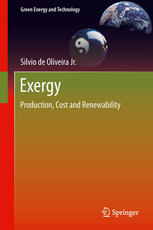

Most ebook files are in PDF format, so you can easily read them using various software such as Foxit Reader or directly on the Google Chrome browser.
Some ebook files are released by publishers in other formats such as .awz, .mobi, .epub, .fb2, etc. You may need to install specific software to read these formats on mobile/PC, such as Calibre.
Please read the tutorial at this link: https://ebookbell.com/faq
We offer FREE conversion to the popular formats you request; however, this may take some time. Therefore, right after payment, please email us, and we will try to provide the service as quickly as possible.
For some exceptional file formats or broken links (if any), please refrain from opening any disputes. Instead, email us first, and we will try to assist within a maximum of 6 hours.
EbookBell Team

4.4
42 reviewsBridging the gap between concepts derived from Second Law of Thermodynamics and their application to Engineering practice, the property exergy and the exergy balance can be a tool for analyzing and improving the performance of energy conversion processes. With the exergy analysis it is possible to evaluate the performance of energy conversion processes not only on a thermodynamics basis but also by including production costs and environmental aspects and impacts of the studied processes. This comprehensive approach of the use of energy has, as one of the most important feature, the identification of sustainable ways of energy resources utilization.
Based on the fundamentals of the exergy concept, its calculation, graphical representations and exergy balances evaluation, Exergy: Production Cost And Renewability describes the application of detailed exergy and thermoeconomic analysis to power plants and polygeneration systems, petroleum production and refining plants (including hydrogen production), chemical plants, biofuel production routes, combined production of ethanol and electricity, aircraft systems design, environmental impact mitigation processes and human body behavior.
The presented case studies aim at providing students, researchers and engineers with guidelines to the utilization of the exergy and thermoeconomic analysis to model, simulate and optimize real processes and industrial plants.